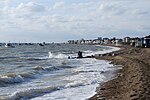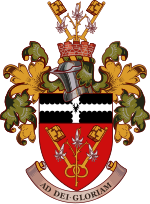Shoeburyness High School
Academies in Southend-on-SeaBilateral schools in EnglandSecondary schools in Southend-on-SeaUse British English from February 2023
Shoeburyness High School is a coeducational secondary academy school in Southend-on-Sea, Essex. The school is larger than the average sized secondary academy, with almost 1800 students on roll. 275 of the enrolled students are in the sixth form.
Excerpt from the Wikipedia article Shoeburyness High School (License: CC BY-SA 3.0, Authors).Shoeburyness High School
Caulfield Road, Southend-on-Sea
Geographical coordinates (GPS) Address Phone number Website External links Nearby Places Show on map
Geographical coordinates (GPS)
| Latitude | Longitude |
|---|---|
| N 51.53291 ° | E 0.77581 ° |
Address
Shoeburyness High School
Caulfield Road
SS3 9LL Southend-on-Sea, North Shoebury
England, United Kingdom
Open on Google Maps








